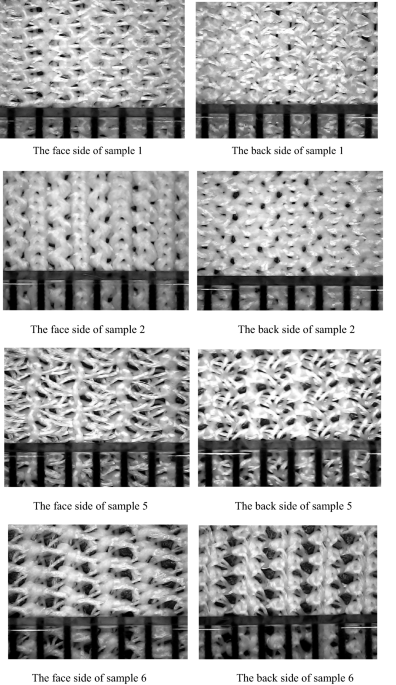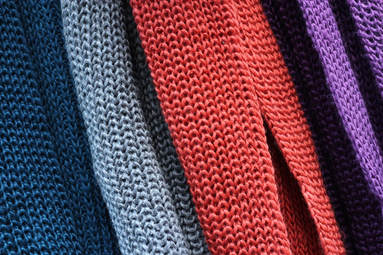Development of tricot warp knitted fabrics with moisture

Warp knitted mesh fabric was usually applied to sportswear due to good air transmission, but without multilayer structure and one-way transport property. In order to solve this problem, the miss-lapping structure was applied to examine the possibility to fabricate multilayer and improve water transport in warp knitting structure. Besides, the effect of thread type and warp density on comfort properties were also exploited to enhance the moisture management. The moisture management test, water vapor permeability and air permeability were examined. Long float at the back side in structure I formed by miss-lapping could improve liquid transport and air permeability, but slightly reduce water vapor permeability. With proper density, there existed the optimal one-way transport capacity and overall moisture management. Warp density in 20 cpc was an optimal parameter of knitting process. Taking advantage of miss-lapping, sample 5 where polypropylene was partly threaded on GB1 provided best moisture management, water vapor permeability and air permeability.

What Are Knit Fabrics: Basic Knits You Should Know As A Sewing

Sweat and odor in sportswear – A review - ScienceDirect

One‐way capillary flow in the diode areas of AHFDs. A) One‐way

Photographs of auxetic warp knitted fabrics produced at the

Top: schematic drawing of warp-knitted (left) and weft-knitted

Knit Fabrics - an overview

Tricot Fabric - Everything You Need To Know - Bryden Apparel

Articles Fashion and Textiles

Development of tricot warp knitted fabrics with moisture

Gehring-Tricot Warp Knit Fabrics

The ideal 3D pictures of structures used in this study.

Structural and wettability characterizations of AHFD. A) SEM image

PDF) Effects of fabrics with dynamic moisture transfer properties